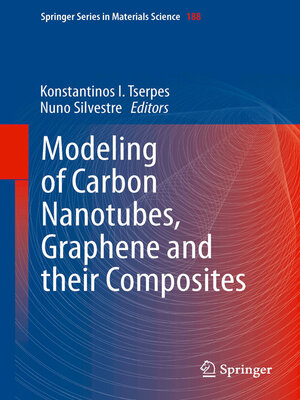Modeling of Carbon Nanotubes, Graphene and their Composites
ebook ∣ Springer Series in Materials Science
By Konstantinos I. Tserpes

Sign up to save your library
With an OverDrive account, you can save your favorite libraries for at-a-glance information about availability. Find out more about OverDrive accounts.
Find this title in Libby, the library reading app by OverDrive.



Search for a digital library with this title
Title found at these libraries:
| Library Name | Distance |
|---|---|
| Loading... |
A large part of the research currently being conducted in the fields of materials science and engineering mechanics is devoted to carbon nanotubes and their applications. In this process, modeling is a very attractive investigation tool due to the difficulties in manufacturing and testing of nanomaterials. Continuum modeling offers significant advantages over atomistic modeling. Furthermore, the lack of accuracy in continuum methods can be overtaken by incorporating input data either from experiments or atomistic methods. This book reviews the recent progress in continuum modeling of carbon nanotubes and their composites. The advantages and disadvantages of continuum methods over atomistic methods are comprehensively discussed. Numerical models, mainly based on the finite element method, as well as analytical models are presented in a comparative way starting from the simulation of isolated pristine and defected nanotubes and proceeding to nanotube-based composites. The ability of continuum methods to bridge different scales is emphasized. Recommendations for future research are given by focusing on what still continuum methods have to learn from the nano-scale. The scope of the book is to provide current knowledge aiming to support researchers entering the scientific area of carbon nanotubes to choose the appropriate modeling tool for accomplishing their study and place their efforts to further improve continuum methods.







